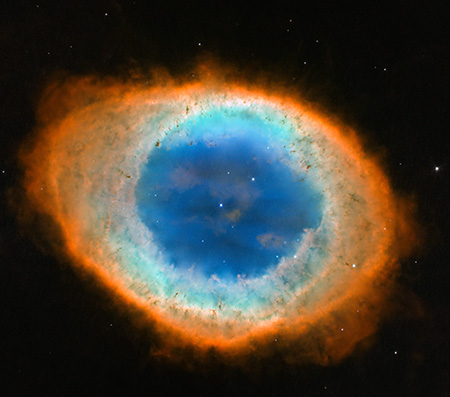My Favorite Planetary Nebula
The Ring Nebula: Messier 57

M57, or the Ring Nebula, is a planetary nebula, the glowing remains of a sun-like star. The tiny white dot in the center of the nebula is the star’s hot core, called a white dwarf. M57 is about 2,000 light-years away in the constellation Lyra, and is best observed during August. Discovered by the French astronomer Antoine Darquier de Pellepoix in 1779, the Ring Nebula has an apparent magnitude of 8.8 and can be spotted with moderately sized telescopes.
The incredible Ring Nebula
More about Messier 57
M57 is tilted toward Earth so that astronomers see the ring face-on. This gorgeous, high-resolution Hubble image helped astronomers determine that the nebula’s shape is more complicated than initially thought. The blue gas in the nebula’s center is actually a football-shaped structure seen end-on that pierces the red, doughnut-shaped material. The inner rim of the ring displays an intricate structure of dark, irregular knots of dense gas that the stellar winds have not yet been able to blow away. The knots and their tails look like spokes in a bicycle.
This image of M57 has been colorized to illustrate the nebula’s chemical composition. The deep blue color in the center represents helium, the light blue color of the inner ring is the glow of hydrogen and oxygen, and the reddish color of the outer ring is from nitrogen and sulfur.
Learn more about Messier 57